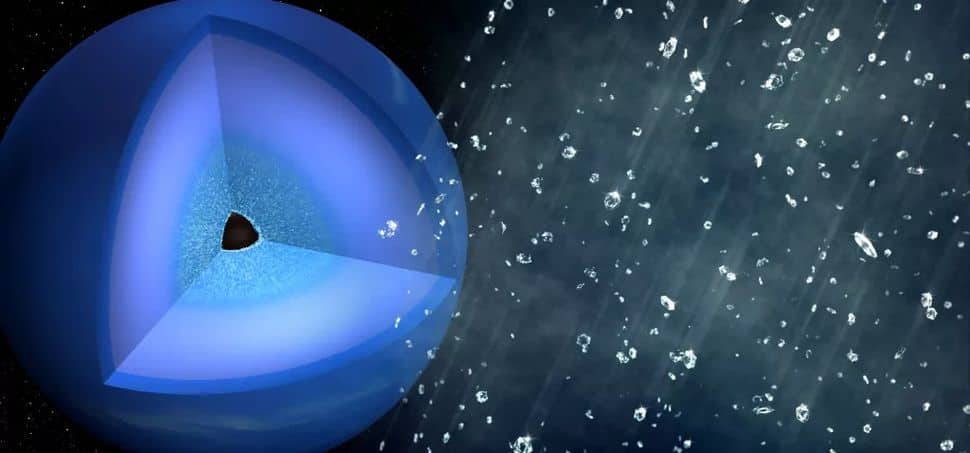
The Earth isn’t the only planet on which it rains. In fact, on other planet it rains methane, sulfuric acid, or even diamonds.
Diamond rain formation is a fascinating phenomenon that occurs on icy planets like Neptune and Uranus, and it has recently gained new understanding thanks to an international research team. New data from the powerful X-ray laser at the European X-Ray Free-Electron Laser (XFEL) Facility in Schenefeld has shed some light on complex magnetic fields.
Lasers and diamonds
Previously, scientists using X-ray lasers discovered that high pressures in the interiors of large gas planets could transform carbon compounds into diamonds. These diamonds, formed in the upper layers of the planets, were thought to sink deeper into their interiors, resembling a rain of precious stones. However, the latest experiment at the European XFEL seems to suggest a different mechanism.
The results, published in Nature Astronomy, indicate that diamond formation from carbon compounds starts at lower pressures and temperatures than previously assumed. This implies that diamond rain begins at shallower depths on gas giants like Neptune and Uranus.
The finding is more than just a curiosity or a factoid. It could have important implications, as it suggests diamond rain could have a more significant impact on forming a planet’s magnetic fields than previously thought.
“‘Diamond rain’ on icy planets presents us with an intriguing puzzle to solve,” said SLAC scientist Mungo Frost, who led the research. “It provides an internal source of heating and transports carbon deeper into the planet, which could have a significant impact on their properties and composition. It might kick off movements within the conductive ices found on these planets, influencing the generation of their magnetic fields.”
A lot of places could have diamond rain
Another intriguing aspect of this research is the possibility of diamond rain on smaller gas planets, known as “mini-Neptunes.” These planets are not present in our Solar System but are common as exoplanets in the galaxy. The discovery that diamond rain could occur on these smaller planets broadens our understanding of planetary phenomena in the universe.
To simulate the conditions inside these icy giants, the research team used a plastic film made from polystyrene as a carbon source. Under extreme pressure, this material forms diamonds, mimicking the process believed to occur inside the planets. This experiment generated high pressures and temperatures exceeding 3,992 degrees Fahrenheit (2,200 degrees Celsius), akin to those inside the gas giants.
The experiment’s setup involved diamond anvil cells, which function like mini vises, squeezing the sample between two diamonds. Using the X-ray pulses from the European XFEL, the researchers could observe the formation of diamonds in the cell, providing valuable insights into this process’s timing, conditions, and sequence.
Next, the researchers are planning similar experiments that will bring them closer to understanding exactly how diamond rain forms on and impacts the properties of other planets.
“This groundbreaking discovery not only deepens our knowledge of our local icy planets, but also holds implications for understanding similar processes in exoplanets beyond our solar system,” said SLAC’s High Energy Density Director Siegfried Glenzer.









